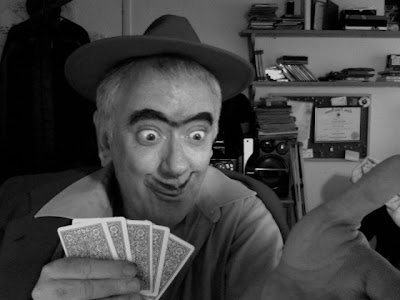 Al Capp may have been the greatest cartoonist-pitchman in the history of print media. You read his ads and you actually want to buy the product! How often does that happen? Just looking at these two pages (above and below, be sure to click to enlarge) makes me salivate for Cream of Wheat and Fruit of the Loom! How did he do it?
Al Capp may have been the greatest cartoonist-pitchman in the history of print media. You read his ads and you actually want to buy the product! How often does that happen? Just looking at these two pages (above and below, be sure to click to enlarge) makes me salivate for Cream of Wheat and Fruit of the Loom! How did he do it? Well, right off the bat you can see that his ads used arresting fields of saturated color. I imagine that most of the rest of the pictures in the magazine, including the ads, were photos and would have used diluted, greyed-down color. Capp's stuff must have really popped out.
Well, right off the bat you can see that his ads used arresting fields of saturated color. I imagine that most of the rest of the pictures in the magazine, including the ads, were photos and would have used diluted, greyed-down color. Capp's stuff must have really popped out. Capp wasn't above using stark primaries to get attention. That and thick, black lines certainly made the images jump from the page. Here (above) he fearlessly attempts to sell rutabagas (yellow turnips), surely the most difficult item of all to make ads for.
Capp wasn't above using stark primaries to get attention. That and thick, black lines certainly made the images jump from the page. Here (above) he fearlessly attempts to sell rutabagas (yellow turnips), surely the most difficult item of all to make ads for.Notice the astonishingly bland and generic typeface on the Arrow Canning Company logo. That's obviously not Capp's work. You can tell that the client was a simple man who went along with the cartoon idea, but insisted that it be integrated with what he believed was the magical, charismatic quality of the original Arrowhead logo, so beloved by his aging grandmother. With clients like this Capp still managed to make art.
 You have to enlarge this (above). Here Capp goes wild with expressionist graphics. It sells the product, though.
You have to enlarge this (above). Here Capp goes wild with expressionist graphics. It sells the product, though. It helps to have a genius like Capp doing your ads, but even comic ads drawn by fairly normal artists (above) are effective. You have to wonder why magazines don't carry more of them. People like them so much that they'll even endure the tedious copy underneath the strip.
It helps to have a genius like Capp doing your ads, but even comic ads drawn by fairly normal artists (above) are effective. You have to wonder why magazines don't carry more of them. People like them so much that they'll even endure the tedious copy underneath the strip. Well, maybe not in every case. I had no desire to read the boring copy below the Midol comic (above). Even so, I willingly read the drawn part of the ad and it succeeded in stamping the brand name on my brain.
Well, maybe not in every case. I had no desire to read the boring copy below the Midol comic (above). Even so, I willingly read the drawn part of the ad and it succeeded in stamping the brand name on my brain. Maybe this (above) is what killed comic strip ads.
Maybe this (above) is what killed comic strip ads.Thanks to Mike Fontanelli who wrote the terrific article these Capp ads were swiped from. If you haven't read Mike's piece yet, then run don't walk to ASIFA-Hollywood's archive site and take a look. Steve Worth, who for my money is one of the best web designers in the business, did a great job of formatting it all.




































